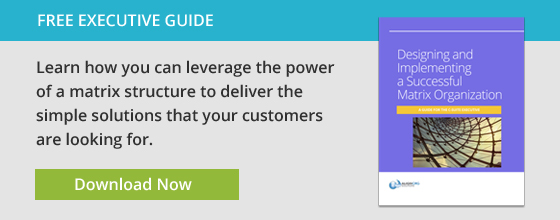Most companies approach the strategic business planning process as an annual ritual starting mid-year and lasting three to four months, to identify how to allocate resources for the coming year. Once they’ve turned in the plan and gotten approval, many leaders set planning aside and turn back to discussions that are more operational in nature. For instance, “How are we doing? Are we tracking to the plan? How are we going to capture this customer order or expand our business with that customer?”
Staying on top of operations is a good practice, but rarely do those conversations invite leaders back to the strategic balcony to reassess the strategic implications of how the business is performing or how the market is evolving since the plan was set. Most operational discussions are more about execution than about further discussing and clarifying how priorities are going to be met. Which begs the question: what happens when the market behaves unexpectedly, or things start happening faster than the annual planning cycle? What mechanisms can leaders use to address these changes?
Two mindsets that don’t support resiliency to a changing market…
When the market changes unexpectedly tradeoffs are inevitable. The company that is able to respond timely and appropriately will be better positioned to come out ahead.
I have observed two opposing responses to changes in the marketplace that often bring about sub-optimal results.
One is what we refer to as the one-and-done mentality. This is the attitude that if we nail it now, it’s done and we don’t have to think about it anymore. In our book, Mastering the Cube: Overcoming Stumbling Blocks and Building an Organization that Works, we explore in depth how this mindset creates stumbling blocks to organizational alignment. However, it can also create problems in the short-term functioning of a business—such as an unexpected turn of events in the marketplace.
Faced with the unexpected, some leaders will say “That’s not part of our plan,” and wait until next year to make changes in the plan. While there is much to be said for sticking to a plan, this is not always a wise course of action. It’s the responsibility of the leader to assess the situation and ask whether the original plan is still viable, or if it might be better to revisit the plan to ascertain whether it might need to be altered in light of current reality.
The flip side to this approach is the shiny object syndrome. Some organizations display a hyper-responsiveness to the marketplace which amounts to a lack of discipline. Something presents itself and they say “Oh, that’s cool, we should go do that”—without considering whether they have the resources in place to tackle something new, or whether the new direction is in alignment with the mission and goals of the organization.
So there are two sides to the coin. On the one hand, we can miss opportunities we should be pursuing. On the other, we can pursue things that sound good without thinking through how to resource or accomplish them effectively given the other priorities already committed to.
And one mindset that does…
Because of the dynamic nature of the marketplace, no strategic plan will remain one hundred percent dialed in to the market for long. The plan you are currently executing may or may not be the strategic priority it was a few weeks or months ago. But without dialogue, you may not realize it.
Leaders need to be routinely and continuously having strategic business planning conversations even at times when there is no formal strategic planning cycle in progress or even when there is no apparent trigger or forthcoming opportunity. Making it a regular practice to sit down, look at strategy, and ask if there are emerging trends or opportunities that would cause us to re-think or modify our plan forces conversations about trends, scenarios, and trade-offs. All of these are strategic discussions that cannot be addressed effectively without a continual dialogue that goes beyond operational reviews.
By maintaining awareness of what is going on in the changing marketplace, keeping up that dialogue beyond just the strategic planning window, and responding strategically when necessary, you will empower the organization to respond at the speed of the market.






